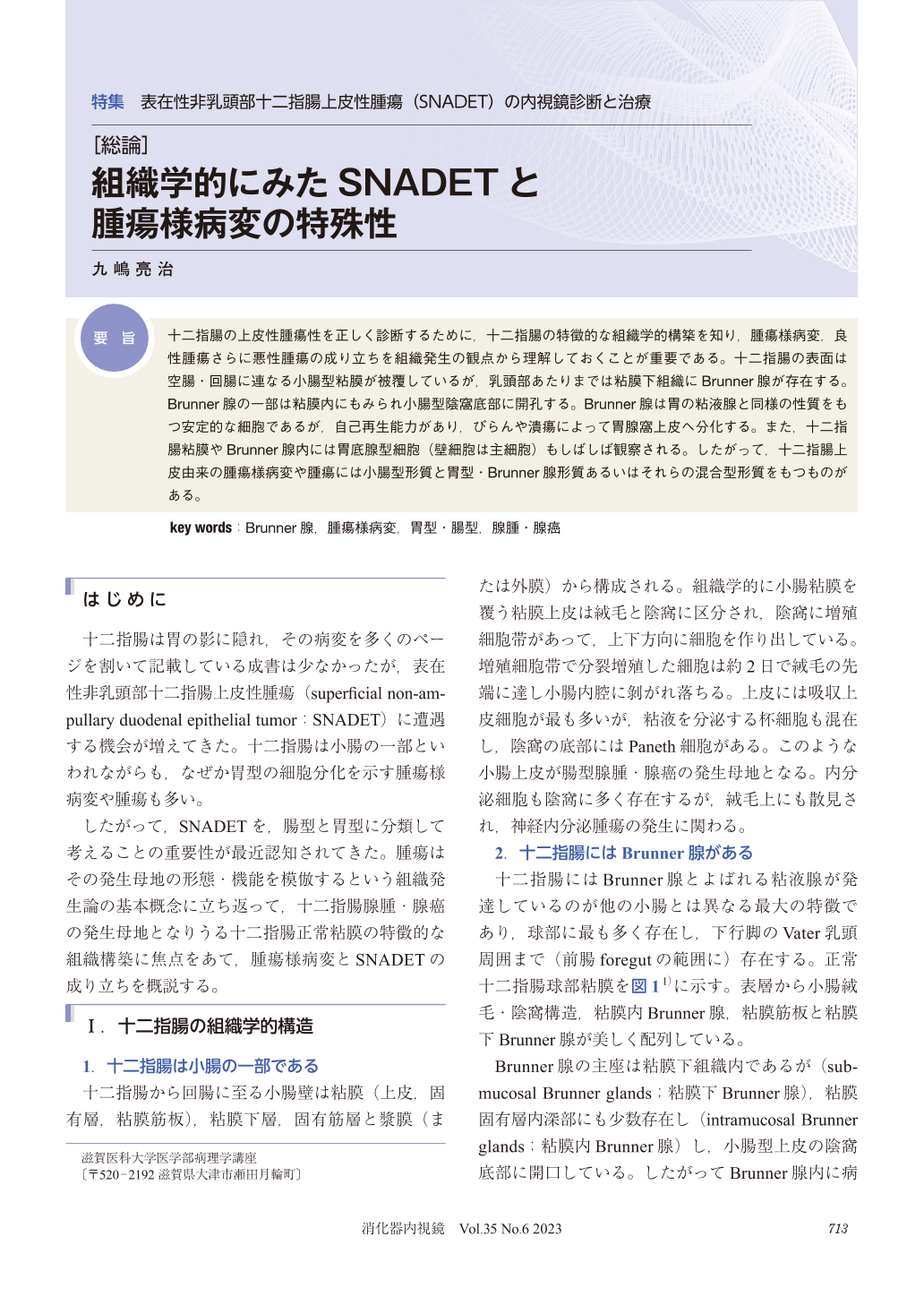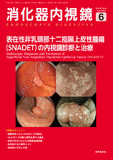Japanese
English
- 有料閲覧
- Abstract 文献概要
- 1ページ目 Look Inside
- 参考文献 Reference
- サイト内被引用 Cited by
要旨
十二指腸の上皮性腫瘍性を正しく診断するために,十二指腸の特徴的な組織学的構築を知り,腫瘍様病変,良性腫瘍さらに悪性腫瘍の成り立ちを組織発生の観点から理解しておくことが重要である。十二指腸の表面は空腸・回腸に連なる小腸型粘膜が被覆しているが,乳頭部あたりまでは粘膜下組織にBrunner腺が存在する。Brunner腺の一部は粘膜内にもみられ小腸型陰窩底部に開孔する。Brunner腺は胃の粘液腺と同様の性質をもつ安定的な細胞であるが,自己再生能力があり,びらんや潰瘍によって胃腺窩上皮へ分化する。また,十二指腸粘膜やBrunner腺内には胃底腺型細胞(壁細胞は主細胞)もしばしば観察される。したがって,十二指腸上皮由来の腫瘍様病変や腫瘍には小腸型形質と胃型・Brunner腺形質あるいはそれらの混合型形質をもつものがある。
In order to correctly diagnose a superficial non-ampullary duodenal epithelial tumor (SNADET), it is important to understand the characteristic histological architecture of the duodenum and the pathogenesis of tumor-like lesions, benign tumors, and malignant tumors from the histopathogenetic viewpoint. The surface of the duodenum is covered with a small intestinal type mucosa connecting the jejunum and ileum, and Brunner's glands are present in the submucosa to the ampullary region. Some Brunner's glands are also seen in the mucosa and open at the base of the small intestine crypts. Brunner glands consists of stable cells with properties similar to those of pylori glands in the stomach. However, they are capable of self-renewal and potentially differentiate into gastric foveolar epithelium by erosion or ulceration. In addition, gastric fundic gland cells (parietal and chief cells) are often observed in the duodenal mucosa and Brunner glands. Therefore, tumor-like lesions and tumors of duodenal epithelial origin may show small intestinal phenotype, gastric-Brunner glands phenotype type, or mixed phenotype.

© tokyo-igakusha.co.jp. All right reserved.


